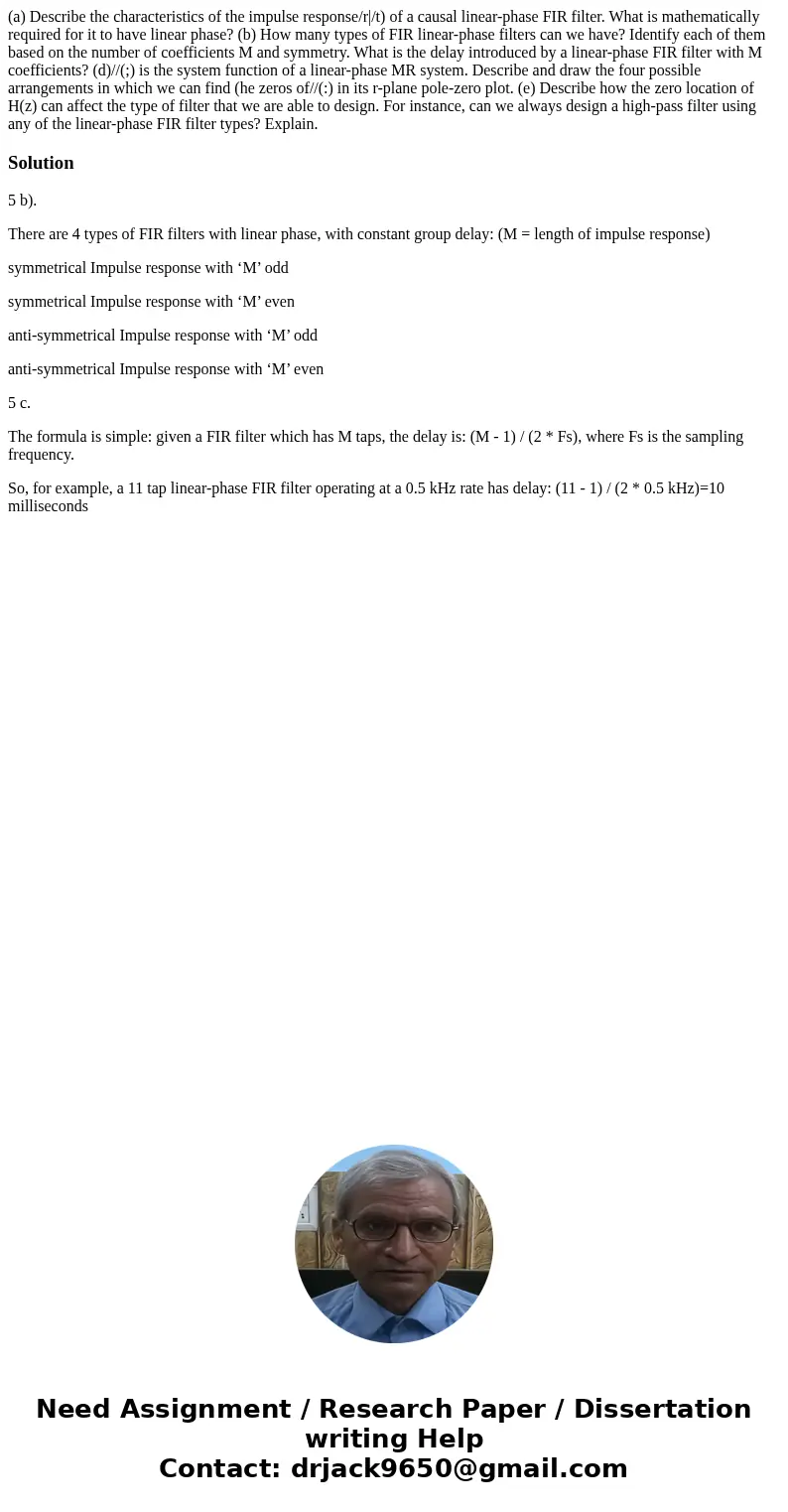a Describe the characteristics of the impulse responsert of
(a) Describe the characteristics of the impulse response/r|/t) of a causal linear-phase FIR filter. What is mathematically required for it to have linear phase? (b) How many types of FIR linear-phase filters can we have? Identify each of them based on the number of coefficients M and symmetry. What is the delay introduced by a linear-phase FIR filter with M coefficients? (d)//(;) is the system function of a linear-phase MR system. Describe and draw the four possible arrangements in which we can find (he zeros of//(:) in its r-plane pole-zero plot. (e) Describe how the zero location of H(z) can affect the type of filter that we are able to design. For instance, can we always design a high-pass filter using any of the linear-phase FIR filter types? Explain. 
Solution
5 b).
There are 4 types of FIR filters with linear phase, with constant group delay: (M = length of impulse response)
symmetrical Impulse response with ‘M’ odd
symmetrical Impulse response with ‘M’ even
anti-symmetrical Impulse response with ‘M’ odd
anti-symmetrical Impulse response with ‘M’ even
5 c.
The formula is simple: given a FIR filter which has M taps, the delay is: (M - 1) / (2 * Fs), where Fs is the sampling frequency.
So, for example, a 11 tap linear-phase FIR filter operating at a 0.5 kHz rate has delay: (11 - 1) / (2 * 0.5 kHz)=10 milliseconds

 Homework Sourse
Homework Sourse